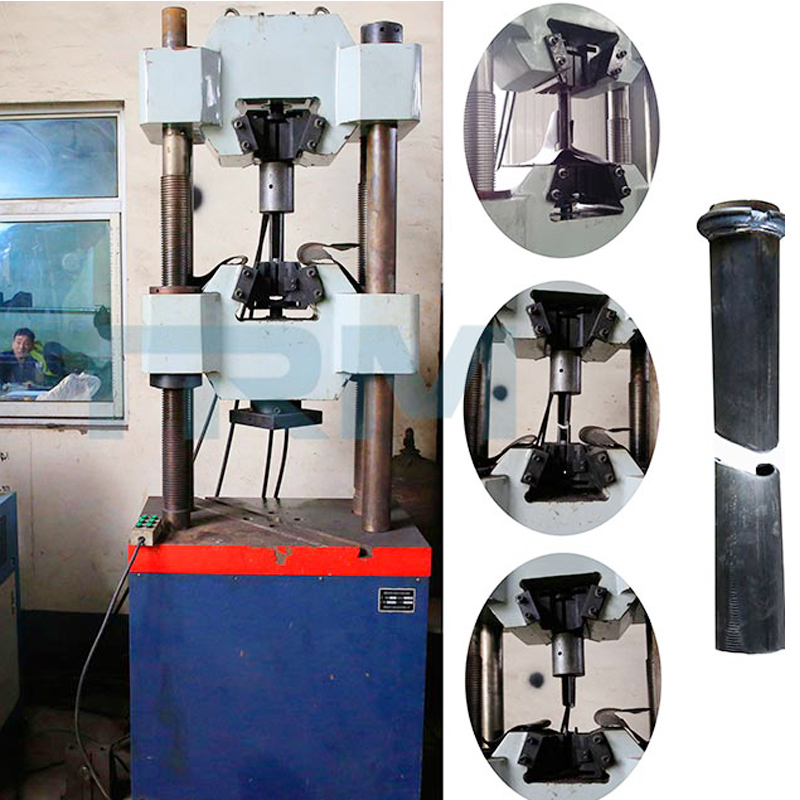What is a pull off test for anchor bolts?
Mar. 18, 2024
A pull-off test for anchor bolts is a crucial procedure used to assess the integrity and reliability of anchor bolts installed in concrete or other substrates. This test involves applying a controlled tensile force to the bolt until it detaches from the substrate or fails in another manner. The force required for detachment or failure provides valuable data about the anchor bolt's performance and its ability to withstand loads under real-world conditions.
Understanding the Test Process
During a pull-off test, a specialized testing apparatus is employed to gradually increase the tension applied to the anchor bolt. This apparatus measures the force exerted on the bolt and monitors its displacement from the substrate. The test continues until the bolt either pulls out of the substrate, experiences significant deformation, or fails in another predetermined manner.
Significance and Impact
The pull-off test serves several essential purposes in construction and engineering:
10 classic bolt anti-loosening designs, collect them now!
8 Classic Bolt Anti-Loosening Designs!
How to Choose the Best Jianzhi Techniques?
How to Choose the Right Jianzhi Brand Products?
How to Choose Hexagonal Metal Gabion Baskets for Landscaping?
How Does Gabion Wall Installation Work?
Custom Gabion Boxes: Your Guide to Stylish, Durable Solutions
Quality Assurance: By subjecting anchor bolts to realistic loading conditions, the pull-off test helps ensure that they meet specified performance standards and regulatory requirements. This is crucial for maintaining structural integrity and safety in various applications, including buildings, bridges, and industrial facilities.
Design Verification: Engineers use the data obtained from pull-off tests to validate the design assumptions and calculations related to anchor bolt selection and installation. This verification process helps optimize the design for efficiency, cost-effectiveness, and safety.
Risk Mitigation: Identifying potential issues with anchor bolts through pull-off testing allows for proactive measures to mitigate risks before they escalate into costly failures or safety hazards. Early detection of inadequate bolt installation, substrate conditions, or material defects enables timely corrective actions.
Performance Evaluation: Pull-off tests provide empirical data on the actual load-carrying capacity of anchor bolts in specific substrates and environmental conditions. This information enhances the accuracy of structural analyses and enables engineers to make informed decisions regarding load capacities, safety factors, and maintenance requirements.
Compliance and Certification: Regulatory agencies and industry standards often require pull-off testing as part of quality control and certification processes for construction projects. Compliance with these standards ensures that anchor bolt installations meet the necessary performance criteria and adhere to safety regulations.
In conclusion, the pull-off test for anchor bolts is a fundamental procedure that plays a vital role in ensuring the safety, reliability, and compliance of structural systems. By subjecting anchor bolts to realistic loading conditions and analyzing their performance, engineers can verify design assumptions, mitigate risks, and optimize structural integrity. This test serves as a critical tool for quality assurance, design validation, risk management, and regulatory compliance in construction and engineering projects.
10 Facts You Should Know about Galvanized Banded Tee Equal
Essential Guide to Galvanized Banded Tee Equal
R8 Shell Mill vs. Standard End Mill: Which Reigns Supreme?
How to Choose the Right R8 Shell Mill?
Key Questions to Ask When Choosing a Solar Panel Installer
Water Pipe Fittings Singapore: Brass vs. PVC - Which Is Best?
Maximize Efficiency with Mould Inserts Service 2024
337
0
0
All Comments (0)
Previous: Why Do Bolts Loosen and What Is Preload?
Next: 10 classic bolt anti-loosening designs, collect them now!
Related Articles
If you are interested in sending in a Guest Blogger Submission,welcome to write for us!











Comments